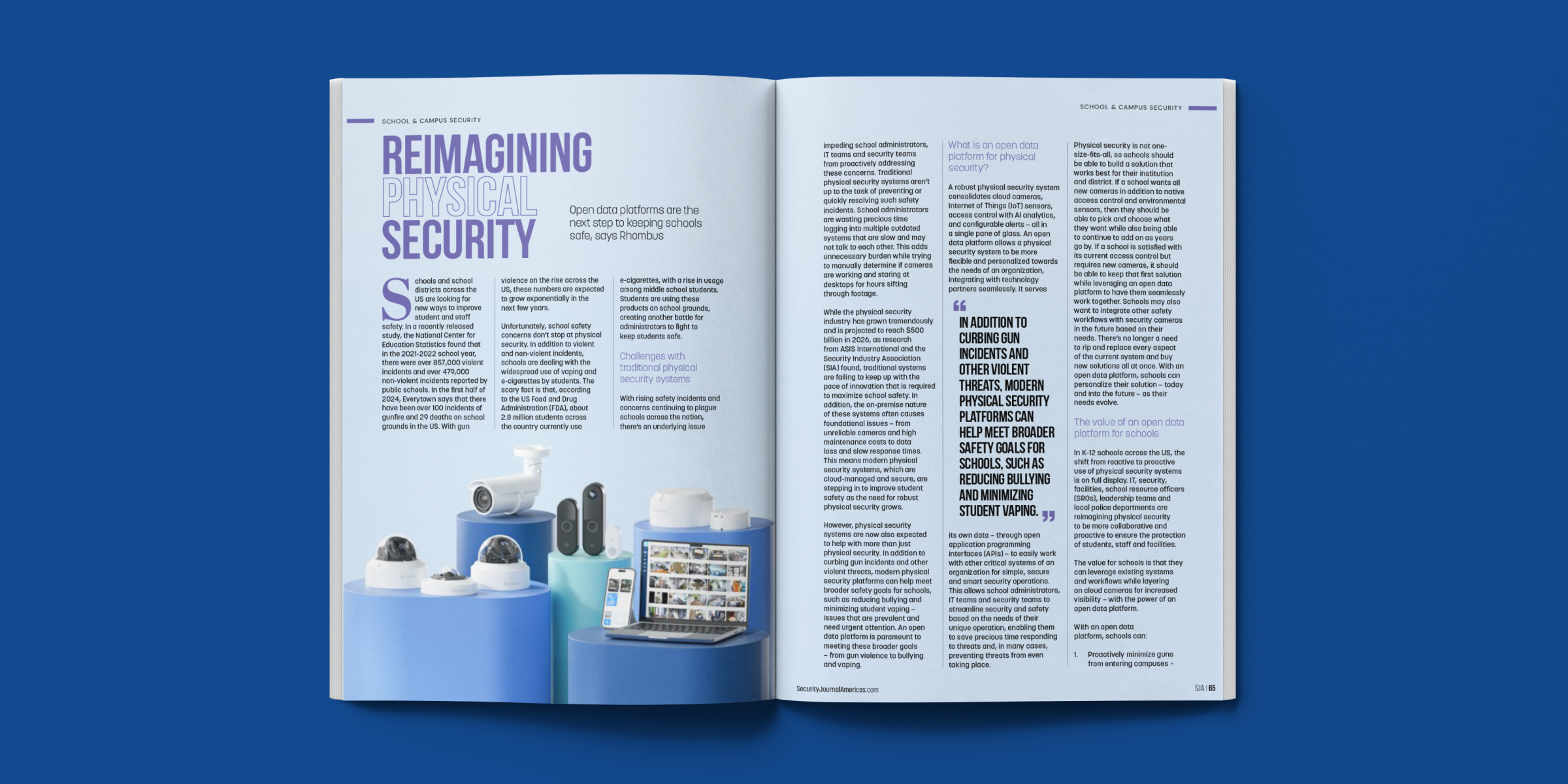Guide to School Video Surveillance Policy: Safety, Privacy, and Legality
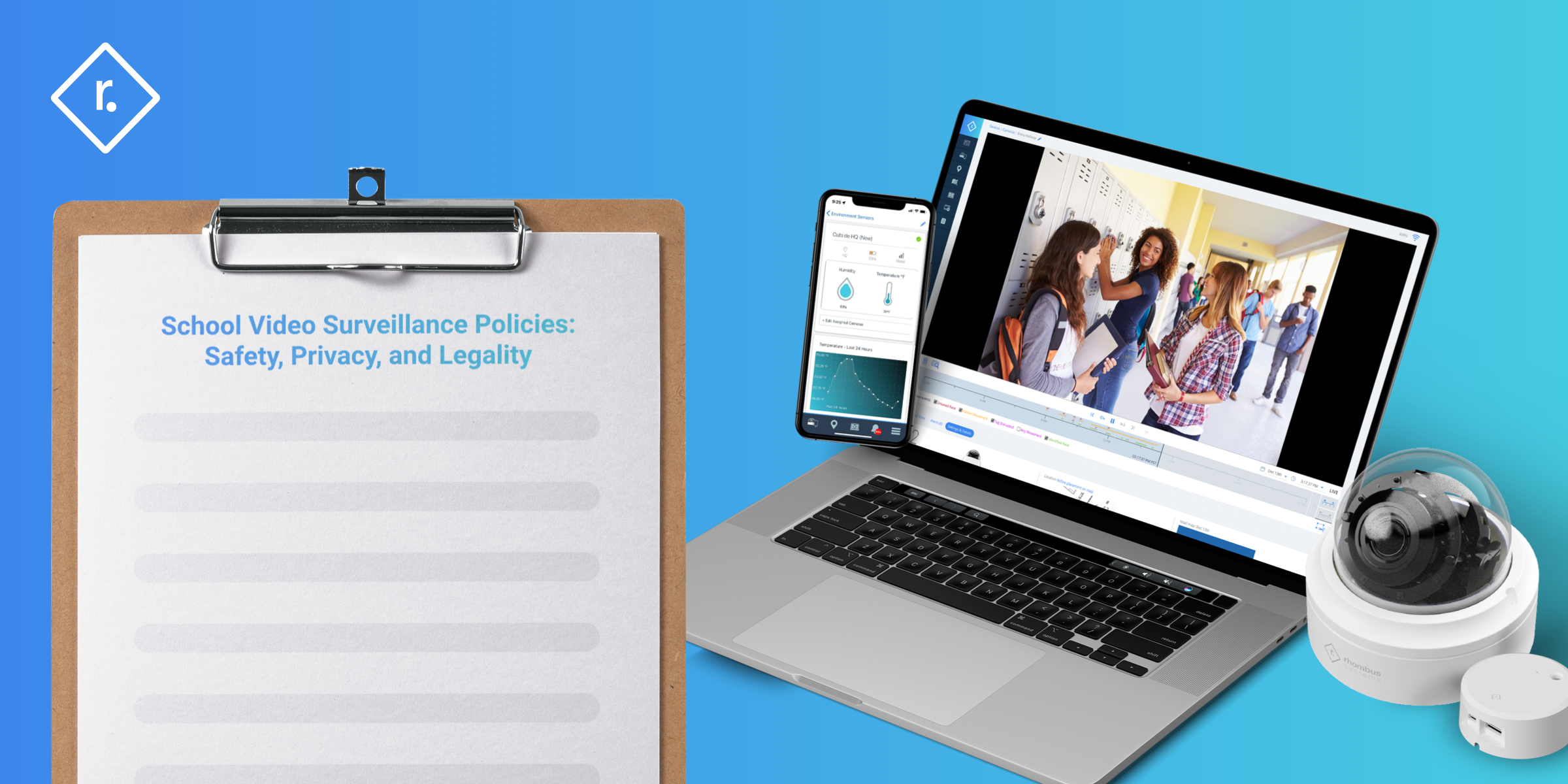
Schools have a responsibility to create a safe environment for students. To address campus safety issues, many K-12 schools, districts, and states are incorporating video security technology—according to the National Center for Education Statistics, over 80% of public schools in the US use security cameras on campus.
As video surveillance on campus becomes the norm, some thought leaders are also calling for caution. Video security shouldn’t be a knee-jerk reaction to safety issues—it should be a thoughtful assessment made with proper consideration for student safety, privacy, and equity.
This article provides a four-step framework for developing school video surveillance policies that are effective, thoughtful, and responsible.
- Policy goals: Identify clear goals for campus video surveillance to build your policy and processes around.
- Legality: Know where cameras are legally permitted and best practices for sharing policy and setting expectations.
- Privacy: Create a balance between student privacy and your school community’s need for a safe learning environment.
- Transparency and equity: Build processes for using technology fairly and equitably to build trust and avoid discriminatory outcomes.
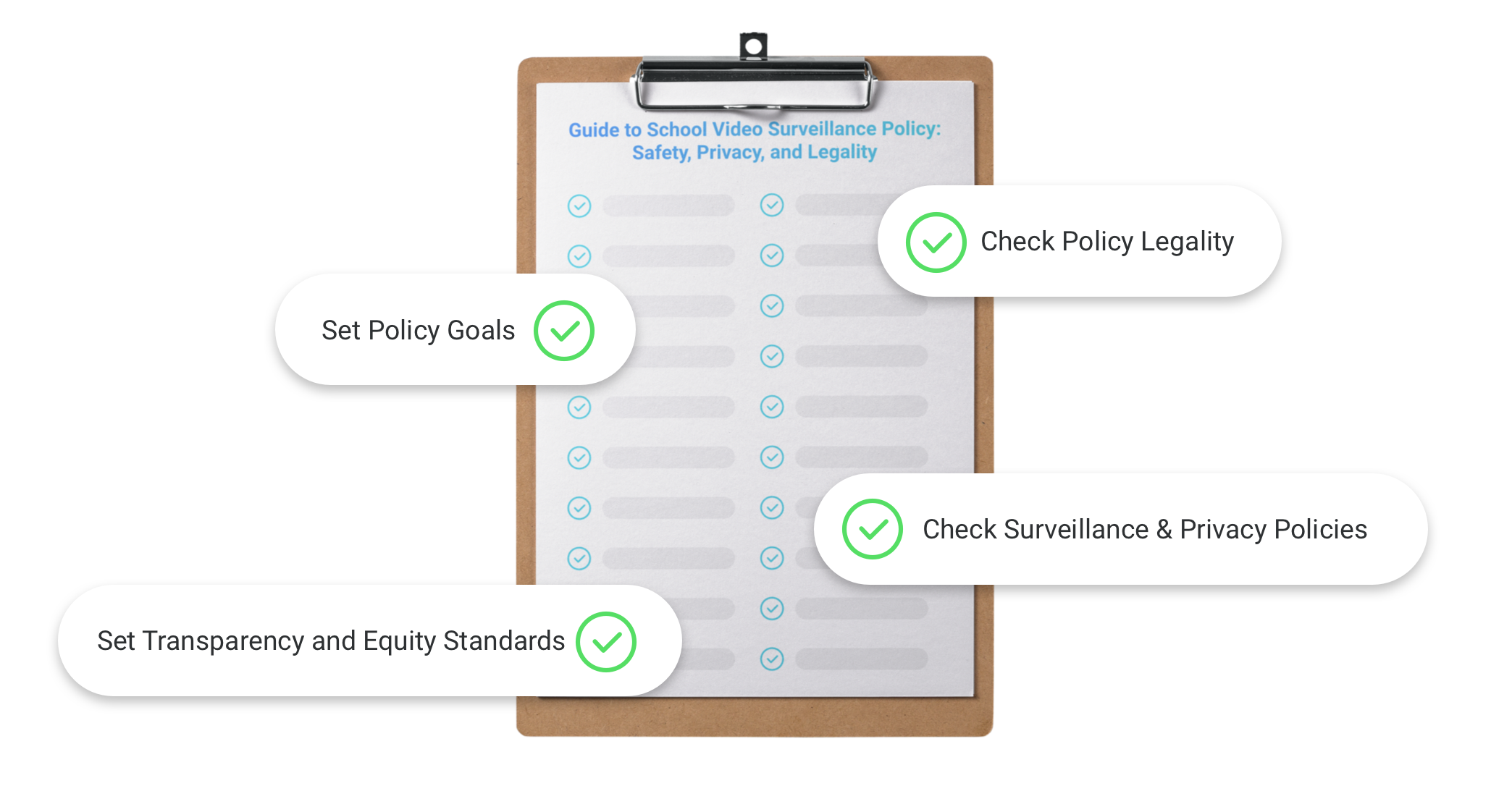
Step One: Setting Policy Goals
“There is absolutely a growing market for this [technology],” says Sara Collins, a policy counsel for FPF’s Education Privacy Project. But schools typically don’t know how to communicate or justify it to parents, she adds, “and they don’t necessarily know why they’re doing it.”
Setting clear video surveillance goals is like creating a roadmap for your policies. When you know your intended destination, it’s much easier to get there.
Effective school surveillance policies have clear goals.
What outcomes do you hope to achieve with video security? Explicitly state the goals of your surveillance efforts. Starting your policy creation process with clear goals has many benefits, including:
- It’s easier to reach goals when they are made explicit.
- It’s easier to communicate the role of surveillance to staff, parents, and students and get them on board with the idea.
- It provides clear rules to follow and implement evenly and fairly across the entire student body. It becomes clear if your standards have been violated or if your system has been used in a way that is discriminatory or not in line with your goals.
To develop the goals for your school or district, you can draw from the examples below:
-
Safety: Protection from physical and external threats
- Detect trespassers, unauthorized individuals, and unauthorized vehicles on school grounds.
- Detect suspicious activity on campus after hours.
- Leverage video surveillance in the event of an emergency; for example, use real-time camera footage to locate relevant parties and share camera livestream access with emergency responders.
- Enhance on-campus guards’ ability to patrol, monitor, and respond to incidents on campus more quickly.
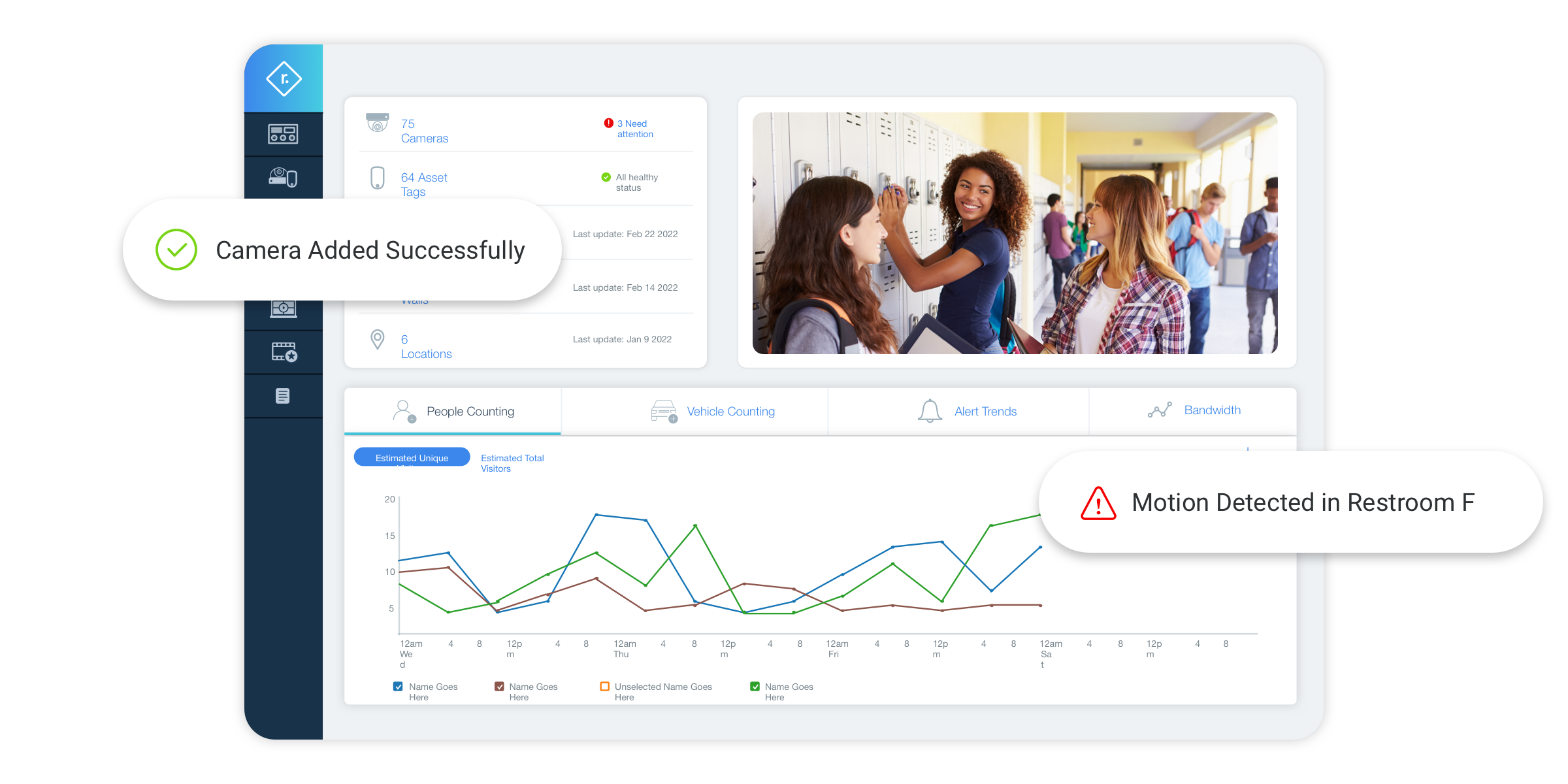
-
Deterrence: Discourage damaging student or staff behavior.
Use surveillance to detect and prevent:
- Bullying
- Vandalism
- Student vaping and smoking
- Cheating
- Deter bad behavior
-
Accountability: In the event of a conflict, hold the correct parties responsible and take appropriate action.
- Find evidence of what took place and take appropriate action.
- In the case of a reported incident, clarify conflicting accounts: provide protection from false accusations, and empower administrators to take otherwise unsupported accusations seriously—especially in cases where there is a lack of evidence.
Step Two: Checking Policy Legality
“Courts have generally upheld that cameras placed in public locations—where students would not have a reasonable expectation of privacy—do not violate the Fourth Amendment and that classrooms are public places though a school restroom or locker room is not.” - School Surveillance: The Consequences for Equity and Privacy.
After you identify your goals for video surveillance, you’ll likely have an idea of where on campus you want to install them.
At this point, it’s important to be aware of where cameras are and aren’t legally permitted. Students have certain rights to privacy under the Fourth Amendment, and administrators should ensure that camera placement is compliant with legal standards concerning surveillance and privacy rights.
Where are school security cameras legally allowed?
Areas security cameras are permitted and commonly used:
- Building entrances and exits
- Public administrative office areas
- Near lockers, storage areas, trophy cases, bookcases, etc.
- On buses
- Parking lots
- Playgrounds and athletic fields
- Cafeterias
Areas security cameras are permitted but less commonly used and should be deployed with extra thought:
- Classrooms
- Hallways
Areas security cameras are NOT permitted:
- Restrooms
- Athletic locker rooms or changing rooms
- Staff offices
- Anywhere there is a reasonable expectation of privacy.

Smart sensors can help monitor areas where cameras aren’t permitted. Motion sensors can detect activity after-hours, and air quality sensors can detect vape, THC, and smoke.
Step Three: Protecting Student Privacy
Creating a balance between student privacy and school safety can feel challenging. To start, consider two things: controlling access to security footage and properly communicating privacy expectations.
Data privacy: Who should have access to security footage?
Privacy concerns don’t stop with where you place security cameras—it’s equally important to consider what you do with video footage after it’s recorded.
Schools have a responsibility to treat surveillance footage with care and discretion. Everything you do with the footage should be in service of the safety of your school’s learning environment and student well-being.
Besides practicing strong cybersecurity protocols, schools must set policies for security footage access.
When deciding who will have access to security footage, refer to the goals you initially identified. The problems you are trying to solve will guide the type of footage you collect and who will have access to it.
Based on your goals, you may decide to extend access to:
- Superintendent
- Principal
- IT personnel
- Security personnel
- School resource officers
- Safety and risk managers
- Top administrators
- School staff, faculty, and teachers on an as-needed basis
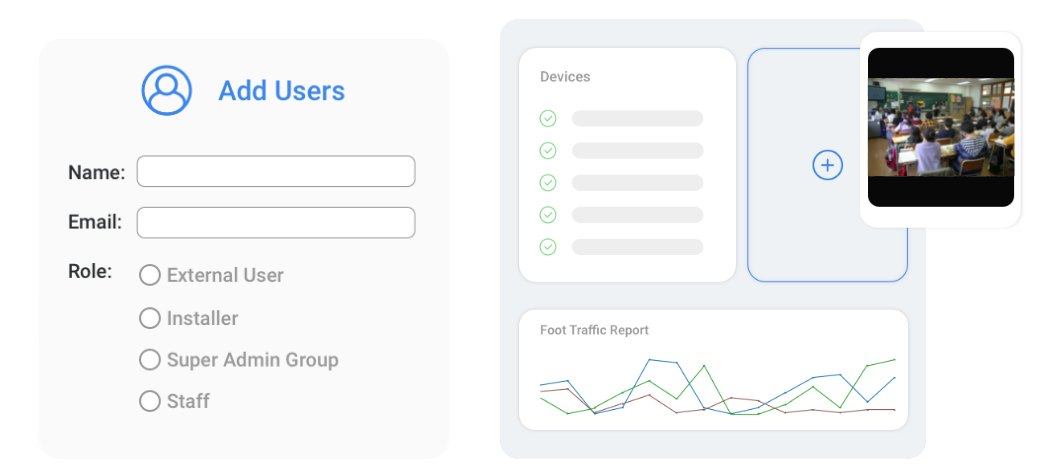
Control access to footage with role-based permissions
Extending access to video surveillance footage is no longer all-or-nothing.
Many modern video security platforms allow you to create detailed user roles with custom permissions and levels of access. This enables you to tightly control access to video footage, including on a camera-by-camera basis.
Examples of different role customizations:
- Give security guards view-only access to footage
- Provide teachers with access to cameras only for classrooms in which they teach
- Allow only IT personnel to create new alert policies
- Extend license plate recognition or facial recognition capabilities only to safety and risk officers
By creating clear policies that describe who can access security footage and under what circumstances, you can better protect student privacy while improving campus safety.
Communicating surveillance and privacy policies
“Warnick’s transparency principle mandates informing the population under surveillance of the practices and the policies that govern its use. Transparency respects the “personhood of those within the population” but also “prevents feelings of betrayal when a violation of privacy is unexpected, and thus allows for a greater degree of trust between students and schools.” – NASBE article.
It’s essential to communicate your surveillance policy to all students, parents, staff, and visitors on campus. This not only shows respect for all parties being surveilled—but it’s also critical when it comes to adhering to privacy laws.
Privacy laws take into consideration the idea of “reasonable expectation of privacy.” By fairly disclosing your surveillance policies, you can properly set expectations of what level of privacy or lack of privacy individuals on campus will experience.
How to communicate your surveillance and privacy policies:
- Notify staff, students, and parents of your policies in writing. Consider requesting signatures confirming that everyone has received and understood this information.
- Include signage at all campus entrances indicating the use of security cameras.
- Consider making security cameras visible. Some US states have stricter laws around hidden surveillance cameras—for example, New Hampshire, Maine, Kansas, South Dakota, and Delaware require consent to use hidden cameras of any kind.
Sample signage language as recommended by ASCIP:
VIDEO SURVEILLANCE ON CAMPUS
School district buildings and grounds are equipped with electronic surveillance for the safety of students, staff, and visitors. Your actions may be recorded and preserved.

What to include in your surveillance policy notification:
- Explicitly authorize the use of video surveillance on school or district property.
- Share the intent of your surveillance efforts, including but not limited to monitoring the health, welfare, and safety of all staff, students, and visitors and safeguarding facilities and equipment.
- State how recordings may be used in the event of a conflict. If a student or staff member violates any school or district policies, administrative regulations, building rules, or laws, images and video captured through surveillance may be used as evidence that may lead to appropriate disciplinary and legal action. This may include disclosure to law enforcement.
- State that recordings may become a part of a student or staff member’s record or a staff member’s record.
Step Four: Transparency & Equity in Policy
“Without transparency, there can be no trust. Parents and other stakeholders have doubted whether to trust schools with their child’s privacy. Partly, this distrust stemmed from the dearth of answers from many states, districts, and schools on what data were being collected, how they were used, and how they were protected.” - NASBE article.
Build trust with transparency
At its best, video security helps create an environment in which students are safer. A large part of that involves creating the trust that the school administration has their best interests at heart and will do right by students.
- Thoroughly share policies with students and parents. The goal is to fairly inform students, not to trick or catch them out.
- Use language that communicates a sense of teamwork as opposed to opposition. It’s not students vs. administration; video surveillance is for the benefit of everyone on campus. Ground your communication in that idea.
Beware of unconscious biases
“The problem is not with the technology itself but with how people use it. Inherent or implicit biases may cause a principal or law enforcement officer to think that a black student reaching into someone’s backpack is stealing when the same action by a white student fails to raise the same suspicion.” – NASBE article.
Even with good intentions, everyone is at risk of falling prey to unconscious biases. Video surveillance is a powerful tool with many security and operational benefits, but it’s also just that—a tool. Its outcomes depend heavily on how real people use it.
As you develop surveillance policies, it’s important to keep this in mind.
- Write policies with clear processes that dictate how video surveillance will be used and under what circumstances. Having processes to follow makes it easier to apply policies equitably.
- Leverage data and reporting to re-evaluate surveillance policies regularly. How are people using the system, and what are the outcomes? Many modern video security systems have detailed internal reporting you can use to audit system usage. Use data to make more concrete decisions about monitoring students and how best to create a safe and equitable learning environment.
There is a positive takeaway amid these calls for caution: video surveillance also empowers schools to create a more fair, equitable, and unbiased environment than before.
Without video security, many conflicts can devolve into murky “he-said-she-said” situations, in which school administrators are forced to choose who to believe. In these circumstances, it can be even more difficult for unconscious biases not to arise—even biases that seem otherwise reasonable, like the bias to believe a high-performing student over a low-performing student or to believe a teacher over a student.
Video surveillance provides clear evidence that helps administrators uncover the truth of a conflict. It can help free investigations from underlying biases and create a safer and fairer environment for everyone on campus.
Takeaways
Schools are under immense pressure to implement newer, better, and smarter ways to keep students safe. Video surveillance is a powerful technology that many schools are deploying—and by developing clear and intentional surveillance policies, you can set your school up for success and make the most out of video security.
If you’re interested in video surveillance for your school or district, Rhombus can help. We’ve worked with schools and districts across the country and have the experience to help you implement video security that’s responsible and effective.
To find out if Rhombus is right for you, reach out to sales@rhombussystems.com to request a demo or a free trial


